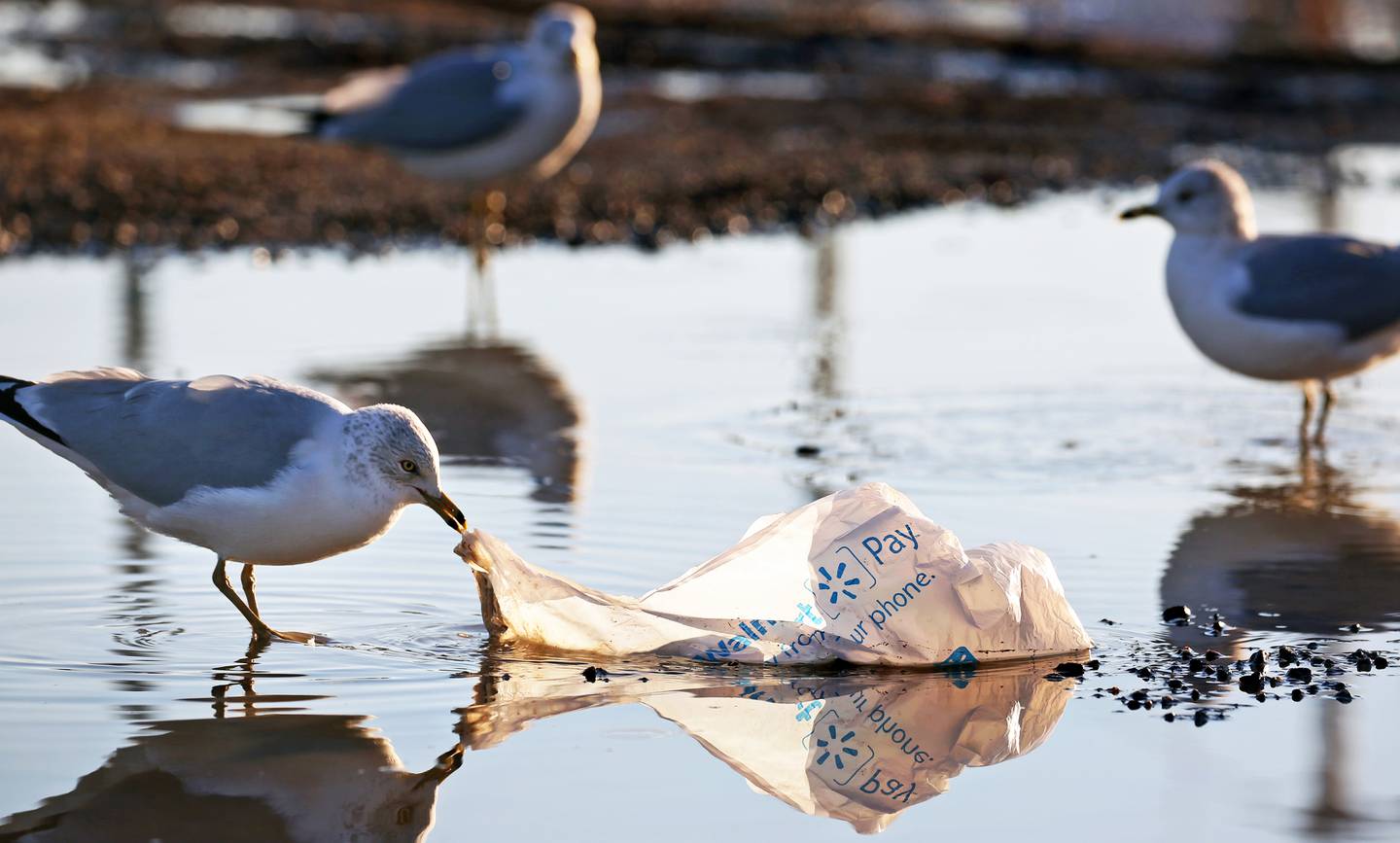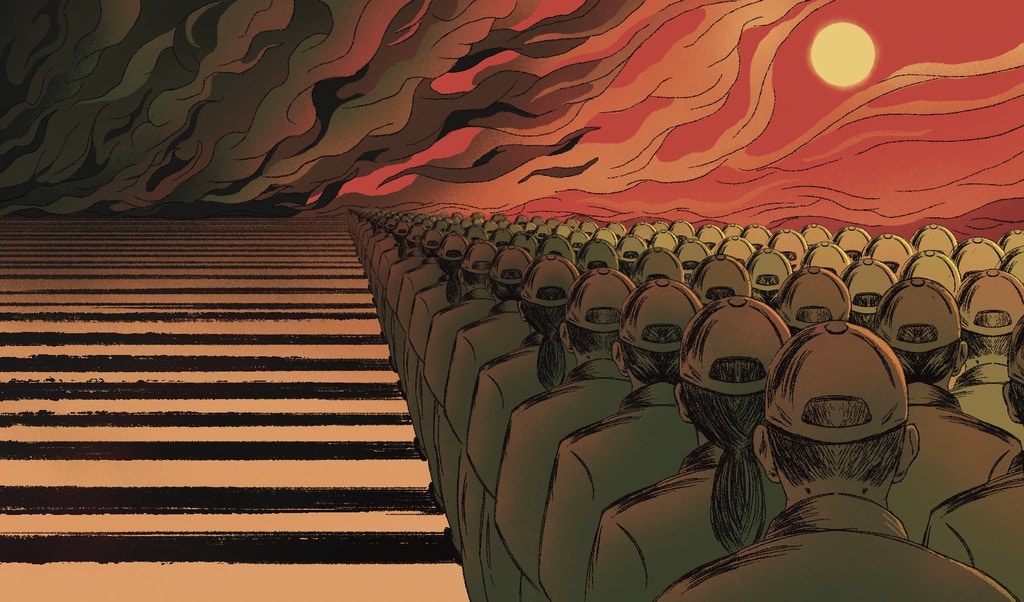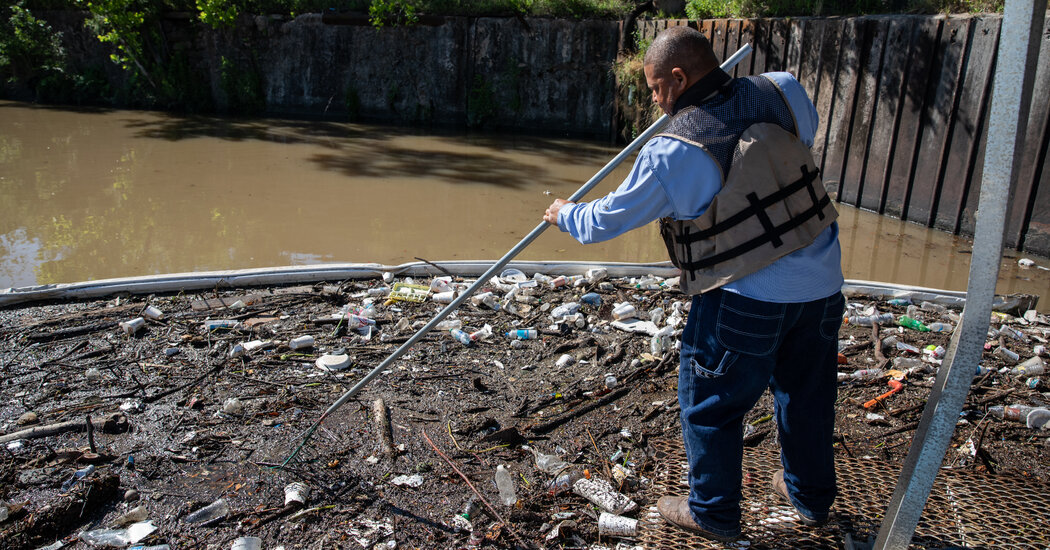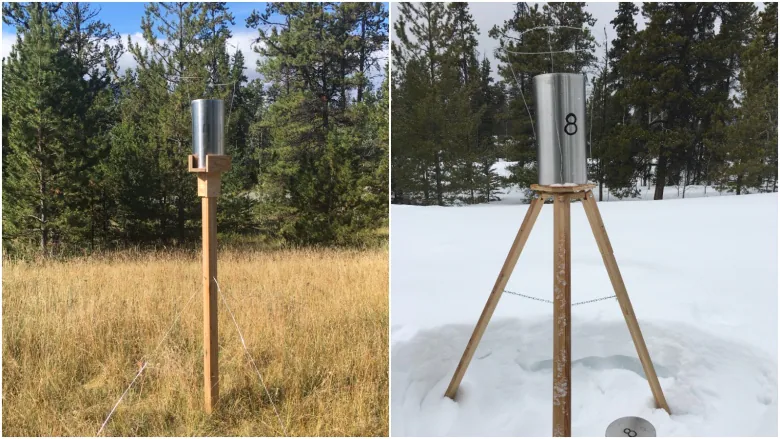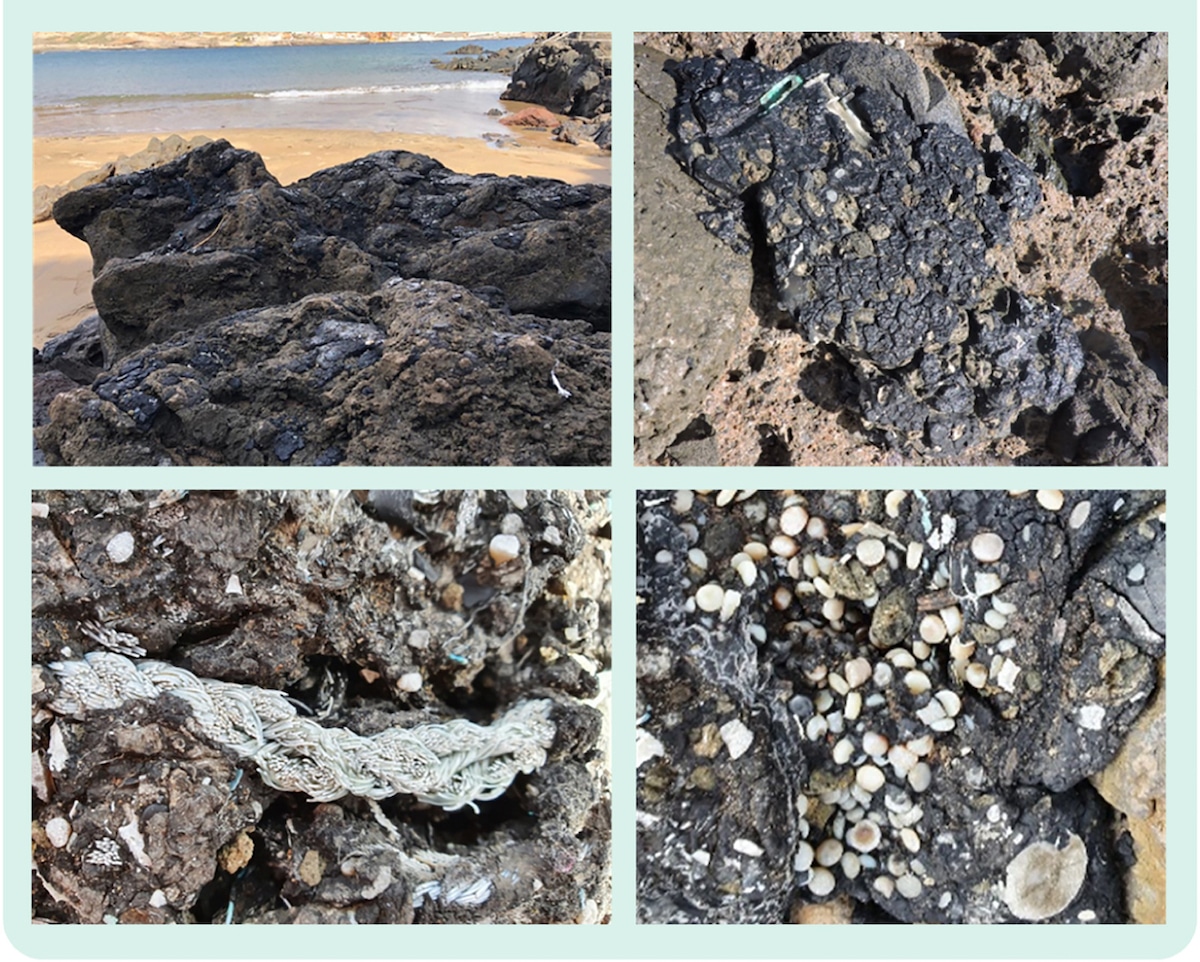VIRGINIA BEACH — With Wegmans announcing this week that plastic bags would no longer be available at its Virginia Beach location beginning July 1, regional environmental activists see an opportunity to spread the word about the harm plastic bags do to local waterways.Some are now lobbying Virginia Beach to pass a measure that would impose a tax on disposable plastic bags. The city could vote as soon as next month on such a proposal — a move advocates say could dramatically reduce the amount of debris in local waterways.AdvertisementFrom 2015-20, plastic bags were the fourth most common type of litter found during the International Coastal Cleanup, conducted by Ocean Conservancy.“I think the largest benefit (from a national chain like Wegmans ending the use of plastic bags) is the awareness of the public to the dangers of plastic bags, whether that’s to tourism, to habitats, to sea creatures all the way down to microplastics,” said Lisa Jennings, Hampton Roads grassroots coordinator for the Chesapeake Bay Foundation.Advertisement[ Wegmans plans to remove plastic bags from Virginia Beach store beginning July 1 ]Consideration of a bag “tax” in Virginia Beach comes after the Virginia General Assembly passed House Bill 534 in 2020 which allowed any county or city to charge a 5-cent fee for each disposable plastic bag that certain retailers provide.Local governments began discussing the ordinance in earnest in May 2021, and since then, eight communities have approved it: Alexandria, Albemarle County, Arlington County, Fairfax County, Falls Church, Fredericksburg, Loudon County and Roanoke.A draft ordinance under consideration by the Virginia Beach City Council would impose a 5-cent fee for each “disposable plastic bag provided to a consumer of tangible personal property by retailers in grocery stores, convenience stores, or drugstores.”Retailers will keep 1 cent, and the other 4 collected by the Department of Taxation must be spent on environmental cleanup, educational programs aimed at reducing pollution, mitigating pollution and litter or providing reusable bags to recipients of SNAP and WIC benefits.Jim Deppe, advocacy coordinator for Lynnhaven River NOW, provided an overview of the bag tax issue to the City Council earlier this month ― describing the 5-cent charge as more of a fee than a tax because it can be avoided by using reusable bags.The council will hold a meeting to hear public comment on the matter on Tuesday and is expected to vote July 5.If approved, the ordinance would go into effect on Jan. 1.If Virginia Beach were to adopt the bag tax, Deppe said in an email that he would expect the city to see a 70-80% drop in plastic bag debris in its waterways in the first year. He based the estimate on similar results reported by an environmental group that has monitored Fairfax County’s waterways since its ordinance went into effect in January.A seagull bites a plastic Walmart bag trapped in a puddle, while looking for food at Deep Creek Marina in Newport News in 2018. (Aileen Devlin/Daily Press/Daily Press)Environmental activists list multiple benefits to reducing plastic bag debris. Turtles have long been known to ingest plastic bags after mistaking them for jellyfish, and swimming into a floating plastic bag could make a tourist not want to return to city beaches, Jennings said. Plastic bags also get stuck in storm drains and complicate Hampton Roads’ flooding problem, she said.AdvertisementFees for plastic bags have led to a dramatic reduction in their use and in pollution where they’ve been implemented. Washington saw a 72% reduction in the amount of plastic bags found in waterways during cleanups in the first 10 years since implementing a 5-cent fee. The city also collected $19 million in revenue during that timeframe, which was used to install traps that helped remove bags and other debris from waterways and to create environmental education programs for students, Deppe said.“Around here there are so many watersheds that need to be freed up of plastic bags that we feel it’s very important to move on and follow the lead of the other communities in Virginia that have implemented this,” Deppe told the Virginia Beach council June 7.At the meeting, council member Guy Tower expressed gratitude to the activists who have pushed the plastic bag fee and said test cases show clear benefits.“This is a community-wide effort,” Tower said. “It makes so much sense to me that I can’t imagine anybody not supporting it.”Restaurants, food banks, farmers markets and food trucks would not be affected. The draft ordinance also would not apply to plastic wraps on food to keep it from spoiling or being contaminated, durable plastic bags designed to be reused, plastic bags used to carry dry cleaning or prescription drugs and plastic bags for garbage and pet waste.Today’s Top StoriesDailyStart your morning in-the-know with the day’s top stories.Jennings said the 5-cent fee is a “nominal” amount, which would cost the average family an estimated $5 per year if they were to pay for the plastic bags each time they went shopping. But she said it could cause shoppers to think twice before choosing plastic.Advertisement“It’s the thought process of, ‘Oh, I have to pay for this object, and what is the object’s value when I’m just using it for the couple of minutes that I’m going to use it?’” she said.Wegmans will offer paper bags for 5 cents each, but its goal is to encourage customers to switch to reusable bags, which it calls “the best option to solve the environmental challenge of single-use grocery bags.” The store will donate the money from paper bag charges to a local food bank, according to a news release.Aldi, Lidl and Trader Joe’s are other large grocery store chains that have moved away from plastic bags.Wegmans said that in stores that already have eliminated plastic bags, paper bags have been used for 20-25% of transactions, while reusable bags were used for the remaining transactions.Virginia Beach residents who would like to provide public comment on the proposed ordinance can email the City Council at citycouncil@vbgov.com.Gavin Stone, gavin.stone@virginiamedia.com
Category Archives: News
Viral video showing Guatemala coastline covered in plastic garbage
A TikTok video has gone viral of a beach in Guatemala completely overwhelmed with plastic garbage from water bottles and old shoes. @4ocean What if we told you this was what Guatemala’s coastlines look like right now… #plasticpollution #trash #ocean #beachcleanup #guatemala ♬ original sound – 4ocean The video posted by 4ocean has now been …
Continue reading “Viral video showing Guatemala coastline covered in plastic garbage”
Viral video showing Guatemala coastline covered in plastic garbage
A TikTok video has gone viral of a beach in Guatemala completely overwhelmed with plastic garbage from water bottles and old shoes. @4ocean What if we told you this was what Guatemala’s coastlines look like right now… #plasticpollution #trash #ocean #beachcleanup #guatemala ♬ original sound – 4ocean The video posted by 4ocean has now been …
Continue reading “Viral video showing Guatemala coastline covered in plastic garbage”
Toxic tiles
When Brittany Goldwyn Merth ripped up the carpets in her Maryland home in March 2019 and laid down vinyl tile, she meticulously documented the process. Merth is a do-it-yourself influencer, part of a growing group of well-coiffed women who track their home improvement projects online through sleek videos and posts studded with affiliate links. To her 46,000 …
Sea turtles along Pakistan coast face host of threats
KARACHI:
Sea turtles along the coast are facing a welter of anthropogenic threats, including habitat degradation, plastic pollution, and entanglement in fishing gears, according to the World Wildlife Fund (WWF).
As a result of the construction of huts along beaches in Karachi and Balochistan, major nesting grounds of sea turtles are adversely affected, the study said on the eve of World Sea Turtle Day.
Since 2000, World Sea Turtle Day is observed every year on June 16 to raise awareness about the dwindling population of sea turtles and their diminishing habitat.
According to Muhammad Moazzam Khan, the technical adviser to WWF-Pakistan, plastic waste, collapsing huts, and rubble pose a serious threat to nesting females and juveniles along Pakistan’s coastal areas.
In Pakistan, sea turtles are known to nest on a number of beaches, including Sandspit, Hawke’s Bay, and Cape Monz along the Sindh coast, as well as Taq (Ormara), Astola Island, Gwadar Headland, and Daran along the Balochistan coast.
Thousands of female turtles visit these beaches to nest and lay eggs.
Also read: WATCH: Wildlife team cradles green turtles babies from beach to sea in Karachi
To collect data on the entanglement of turtles, the WWF-Pakistan initiated a study in 2012, which revealed that 30,000 sea turtles were annually caught in tuna gillnet fisheries of the country.
This included roughly 25,500 Olive Ridley and 4,500 Green turtles in the offshore waters of Pakistan.
Entanglement in fishing nets is the most serious threat to marine turtles.
It was estimated that about 3 per cent of entangled turtles were dying due to drowning or mishandling onboard fishing vessels.
Protecting endangered species
To protect the endangered species, the organisation has trained some 100 “skippers and crew members” to safely release the entangled sea turtles and developed a modification in the operation of the gillnets.
This, the study said, has reduced the entanglement of sea turtles by 85 per cent.
Pollution is also another major threat to the sea turtle population in Pakistani waters. Popular beaches are littered with garbage, dominated by single-use and micro-plastics.
The study has also reported on the impact of diesel and petrol on the population of turtles, stating that exposure to these fuels results in deformation in hatchlings and so, poses a serious threat to their survival.
Government agencies have taken several steps in recent years for the protection of sea turtles along the coasts.
“Through the efforts of WWF-Pakistan, fisheries-related legislations of both maritime provinces have been amended and sea turtles, as well as freshwater turtles, are declared protected,” the study added.
According to Khan, the declaration of Astola Island as a marine protected area, actions taken by the wildlife departments of Sindh and Balochistan, as well as awareness programs initiated by non-governmental wildlife organisations, have collectively increased the turtle population along the coastal regions.
Also read: Turtle species face extinction threat due to illegal fuel trade
However, he added that there is a need to declare all turtle beaches along the coast of Sindh and Balochistan marine protected areas.
Rab Nawaz, the senior director of WWF-Pakistan’s Conservation Biodiversity, for his part, called for “better protection and conservation” of sea turtles in the country.
He said these unique and iconic animals have been in existence for more than 100 million years but are under “serious” threat.
Human activities such as the destruction of nesting sites and unplanned development, as well as climate change, are pushing turtles closer to extinction, which calls for immediate steps for their conservation, he stressed.
Major species
Experts believe that the country has lost 25-30 per cent of the nesting ground for Green turtles over the past decade.
Female turtles lay their eggs on beaches between October and February, and the eggs hatch in about 60 days.
Five species of marine turtles are reported from Pakistan, with Green turtles (Chelonia mydas) the most dominant one, while another important sea turtle is the Olive Ridley (Lepidochelys olivacea) which used to nest along the coast.
However, no nest of this turtle species has been reported since 2001, the study said.
The other three species, including loggerhead turtle (Caretta caretta), hawksbill turtle (Eretmochelys imbricata), and leatherback turtle (Dermochelys coriacea) are reported from Pakistan and only a few authentic records are made by WWF-Pakistan.
Although turtles are not commercially harvested for food, however, poaching of turtle eggs has been reported.
Turtle hatchlings are also illegally removed from their nests and sold in aquarium shops.
“Although the government takes action against poachers, this illegal trade still continues and needs to be curbed,” it concluded.
Saving a Texan bayou, ‘16 bottles’ at a time
Bayou Dave, a modern-day Sisyphus, has spent the last dozen years ridding a trash-choked Houston waterway of plastic and Styrofoam. No matter how much Bayou Dave hunts, his quarry never goes away. He finds it each time he sets out on Buffalo Bayou, a slow moving river that wends through the country’s fourth largest city and out to its port. And so it was one recent sweltering morning when he and his longtime deckhand, Trey Dennis, headed on a small barge to a floating boom they’d set out on the water the day before.“Ah, isn’t that sweet,” said Bayou Dave, whose real name is David Rivers, as the boom swung into view.Cradled in the boom’s massive embrace was what they were looking for, and knew they’d find: a vast whorling jumble of trash.There was a toy airplane, a yellow football, a foam egg carton and a nail salon pink flip-flop. There were takeout containers, disposable dental picks and foam cups from 7-11 and Chick-fil-A. More than anything else, there was plastic — bottles that once held water, Coca-Cola, Gatorade, Sprite, Armor All multipurpose car cleaner and Fireball cinnamon whiskey.Mr. Rivers maneuvered the barge over to the island of garbage — as big as a tennis court, it represented a fraction of the trash that flows through the bayou each day — and he and Mr. Dennis got to work.More than 200 square miles of Houston’s sprawling urban streets drain into Buffalo Bayou and one of its tributaries, White Oak Bayou, with the runoff from every storm and rainfall carrying all manner of tossed and lost debris to the waters.Mr. Rivers and Mr. Dennis are among the handful of people who regularly intercept the garbage before it finds its way to the Gulf of Mexico.Using a jury-rigged suction device crafted with the help of duct tape, they haul the equivalent of about 250 full garbage bags out of the Bayou and its nearby waterways each week.Trey Dennis, Mr. Rivers’s deckhand, guided the suction device to suck up trash from the bayou and on to the craft.Michael Starghill Jr. for The New York TimesDowntown Houston seen from the bayou system on a recent morning.Michael Starghill Jr. for The New York TimesMaia Corbitt, president of Texans for Clean Water, described the pair as “our last line of defense” before the trash flows through two ecologically sensitive estuaries and into Galveston Bay. Robby Robinson, the field operations manager for Buffalo Bayou Partnership, the pair’s employer, described their work as “endless, thankless, no reward.”“You just gotta be a special person,” Mr. Robinson said.For Mr. Rivers, working on the Bayou is a calling. He’s been cleaning up its waterways pretty much every weekday for the past dozen years. Few people are more attuned to its inhabitants and its health.Earlier this year Mr. Rivers spotted, to his delight and relief, the first snakes he’s seen on the bayou since Hurricane Harvey wiped out much of its wildlife in 2017. He revels in the riotous colors that crowd the bayou’s banks each spring and fall, waxes rapturous about its assorted birds, rescues baby turtles from rafts of trash, and mourns the fish killed by periodic algal blooms.“It’s the whole ecosystem I’m concerned about,” said Mr. Rivers, 51. “The animals aren’t responsible for the pollution. But they’re directly affected by it.”Growing up in South Acres, a hard bitten Houston neighborhood, Mr. Rivers was a devotee of the nature show “Mutual of Omaha’s Wild Kingdom” and, later, “The Crocodile Hunter.”He worked a series of jobs — stocking shelves at Target, mending railroad tracks, working as a security guard, landscaper and cleaning up toxic spills after Hurricane Katrina — before getting hired to work on the bayou in 2010.A rotating cast served as deckhands on Bayou Dave’s barge until 2015, when Mr. Dennis came aboard. A former high school football player who grew up in Mississippi, Mr. Dennis adored the physicality of the job. “I’m saving the world one bottle, OK, by 16 bottles, at a time,” said Mr. Dennis, 30, who Mr. Rivers nicknamed Country Slim. “This is the best way for our children in the long run to stay healthy too.”Mr. Rivers said he’s been delighted and relieved to see the snakes slowly return to the river since Hurricane Harvey swept through in 2017.Michael Starghill Jr. for The New York TimesOpening the top hatch of the barge to reveal a brimming trash container.Michael Starghill Jr. for The New York TimesBuffalo Bayou is about 18,000 years old, and was saved from being artificially rerouted more than half a century ago, when environmentalists enlisted the help of George H.W. Bush, then a new congressman. In the 1980s, the nonprofit Buffalo Bayou Partnership was formed to maintain and create green spaces and hiking and biking trails along 10 miles of the roughly 52-mile bayou. About two decades later, a board member, Mike Garver, introduced a barge that suctioned up floating garbage, which Mr. Rivers later helped redesign after he became its captain.Mr. Rivers and Mr. Dennis have bayou trash retrieval down to an art.Their bayou-saving chariot is a 30-foot barge mottled with rust. A hardtop bimini shades its helm, a lone concession to human comfort, for the barge has no seats. A foot-wide vacuum hose rests on its bow, fastened with duct tape to another massive hose that feeds a containment area below deck.Understand the Latest News on Climate ChangeCard 1 of 5Great Salt Lake.
Saving a Texan bayou, ‘16 bottles’ at a time
Bayou Dave, a modern-day Sisyphus, has spent the last dozen years ridding a trash-choked Houston waterway of plastic and Styrofoam. No matter how much Bayou Dave hunts, his quarry never goes away. He finds it each time he sets out on Buffalo Bayou, a slow moving river that wends through the country’s fourth largest city and out to its port. And so it was one recent sweltering morning when he and his longtime deckhand, Trey Dennis, headed on a small barge to a floating boom they’d set out on the water the day before.“Ah, isn’t that sweet,” said Bayou Dave, whose real name is David Rivers, as the boom swung into view.Cradled in the boom’s massive embrace was what they were looking for, and knew they’d find: a vast whorling jumble of trash.There was a toy airplane, a yellow football, a foam egg carton and a nail salon pink flip-flop. There were takeout containers, disposable dental picks and foam cups from 7-11 and Chick-fil-A. More than anything else, there was plastic — bottles that once held water, Coca-Cola, Gatorade, Sprite, Armor All multipurpose car cleaner and Fireball cinnamon whiskey.Mr. Rivers maneuvered the barge over to the island of garbage — as big as a tennis court, it represented a fraction of the trash that flows through the bayou each day — and he and Mr. Dennis got to work.More than 200 square miles of Houston’s sprawling urban streets drain into Buffalo Bayou and one of its tributaries, White Oak Bayou, with the runoff from every storm and rainfall carrying all manner of tossed and lost debris to the waters.Mr. Rivers and Mr. Dennis are among the handful of people who regularly intercept the garbage before it finds its way to the Gulf of Mexico.Using a jury-rigged suction device crafted with the help of duct tape, they haul the equivalent of about 250 full garbage bags out of the Bayou and its nearby waterways each week.Trey Dennis, Mr. Rivers’s deckhand, guided the suction device to suck up trash from the bayou and on to the craft.Michael Starghill Jr. for The New York TimesDowntown Houston seen from the bayou system on a recent morning.Michael Starghill Jr. for The New York TimesMaia Corbitt, president of Texans for Clean Water, described the pair as “our last line of defense” before the trash flows through two ecologically sensitive estuaries and into Galveston Bay. Robby Robinson, the field operations manager for Buffalo Bayou Partnership, the pair’s employer, described their work as “endless, thankless, no reward.”“You just gotta be a special person,” Mr. Robinson said.For Mr. Rivers, working on the Bayou is a calling. He’s been cleaning up its waterways pretty much every weekday for the past dozen years. Few people are more attuned to its inhabitants and its health.Earlier this year Mr. Rivers spotted, to his delight and relief, the first snakes he’s seen on the bayou since Hurricane Harvey wiped out much of its wildlife in 2017. He revels in the riotous colors that crowd the bayou’s banks each spring and fall, waxes rapturous about its assorted birds, rescues baby turtles from rafts of trash, and mourns the fish killed by periodic algal blooms.“It’s the whole ecosystem I’m concerned about,” said Mr. Rivers, 51. “The animals aren’t responsible for the pollution. But they’re directly affected by it.”Growing up in South Acres, a hard bitten Houston neighborhood, Mr. Rivers was a devotee of the nature show “Mutual of Omaha’s Wild Kingdom” and, later, “The Crocodile Hunter.”He worked a series of jobs — stocking shelves at Target, mending railroad tracks, working as a security guard, landscaper and cleaning up toxic spills after Hurricane Katrina — before getting hired to work on the bayou in 2010.A rotating cast served as deckhands on Bayou Dave’s barge until 2015, when Mr. Dennis came aboard. A former high school football player who grew up in Mississippi, Mr. Dennis adored the physicality of the job. “I’m saving the world one bottle, OK, by 16 bottles, at a time,” said Mr. Dennis, 30, who Mr. Rivers nicknamed Country Slim. “This is the best way for our children in the long run to stay healthy too.”Mr. Rivers said he’s been delighted and relieved to see the snakes slowly return to the river since Hurricane Harvey swept through in 2017.Michael Starghill Jr. for The New York TimesOpening the top hatch of the barge to reveal a brimming trash container.Michael Starghill Jr. for The New York TimesBuffalo Bayou is about 18,000 years old, and was saved from being artificially rerouted more than half a century ago, when environmentalists enlisted the help of George H.W. Bush, then a new congressman. In the 1980s, the nonprofit Buffalo Bayou Partnership was formed to maintain and create green spaces and hiking and biking trails along 10 miles of the roughly 52-mile bayou. About two decades later, a board member, Mike Garver, introduced a barge that suctioned up floating garbage, which Mr. Rivers later helped redesign after he became its captain.Mr. Rivers and Mr. Dennis have bayou trash retrieval down to an art.Their bayou-saving chariot is a 30-foot barge mottled with rust. A hardtop bimini shades its helm, a lone concession to human comfort, for the barge has no seats. A foot-wide vacuum hose rests on its bow, fastened with duct tape to another massive hose that feeds a containment area below deck.Understand the Latest News on Climate ChangeCard 1 of 5Great Salt Lake.
Whitehorse one of the only cities in the world to measure airborne microplastics
Microplastic pollution is usually associated with the ocean where it’s been widely studied, but new research shows those tiny particles can be found in the air as well, even in the Yukon. A team of researchers at Yukon University have been monitoring the amount of microplastics being deposited from the atmosphere into the air around Whitehorse over the past two years.To do this, they built metal containers, similar to fly traps, and filled them with ultra-purified water. When tiny particles fall out of the atmosphere and into the container, they get trapped in the water. The microplastic collectors, which conform to international standards of dust fallout collection, were placed in four locations around Whitehorse and swapped out monthly to get continuous data. Metal microplastic collectors containing ultra-purified water were placed in 4 locations around Whitehorse over the past couple of years and swapped out monthly to get continuous data.
Whitehorse one of the only cities in the world to measure airborne microplastics
Microplastic pollution is usually associated with the ocean where it’s been widely studied, but new research shows those tiny particles can be found in the air as well, even in the Yukon. A team of researchers at Yukon University have been monitoring the amount of microplastics being deposited from the atmosphere into the air around Whitehorse over the past two years.To do this, they built metal containers, similar to fly traps, and filled them with ultra-purified water. When tiny particles fall out of the atmosphere and into the container, they get trapped in the water. The microplastic collectors, which conform to international standards of dust fallout collection, were placed in four locations around Whitehorse and swapped out monthly to get continuous data. Metal microplastic collectors containing ultra-purified water were placed in 4 locations around Whitehorse over the past couple of years and swapped out monthly to get continuous data.
New type of toxic pollution called 'plastitar' found on Canary Islands
Photographs of plastitar at Playa Grande Beach, Tenerife in December 2021. Science of The Total Environment
Plastic pollution in the oceans. Microplastics. Oil spills. Each of these items is already a distinct crisis. But researchers in the Canary Islands have coined a term for a new type of pollution they are finding in their studies: plastitar. According to the scientists, plastitar is washing up around shores of islands and consists of tar balls, often found after oil spills, and microplastics.

